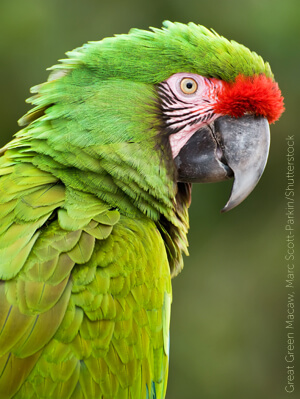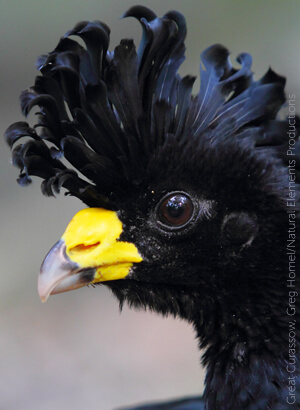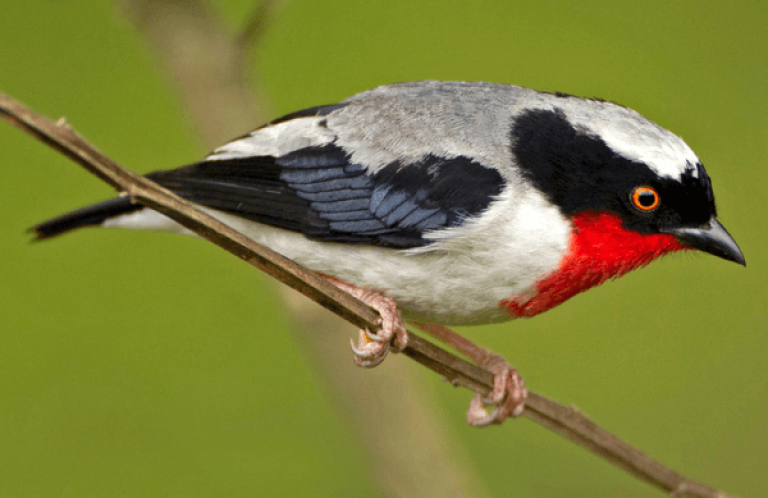Major Expansion of Ecuador Reserve Will Better Protect Over 360 Species of Birds, Other Wildlife
 |
|---|
(Washington, D.C., October 7, 2014) A joint effort among Fundación Jocotoco, Rainforest Trust, American Bird Conservancy (ABC), World Land Trust (WLT), and March Conservation Fund has added 1,187 acres to the Río Canandé Reserve, bringing protection to more than 6,100 acres of forest in the highly threatened Chocó region of northwestern Ecuador.
The expansion resulted from the purchase of six properties adjacent to the existing Río Canandé Reserve in a region that is ranked as the fourth most significant biodiversity hotspot in the world. The reserve is located in a coastal tropical rainforest that extends from southern Colombia to northern Ecuador.
Unfortunately, less than the 10 percent of the original Ecuadorian Chocó forest cover remains intact, due largely to timber extraction and the rapid spread of palm oil plantations located west and south of the reserve. Further contributing to forest degradation are a boom in biofuels development, agricultural activities including creation of pastures, and expansion of settlements. Due to these threats and the diversity of wildlife found nowhere else, the expansion of the Río Canandé Reserve has been a high priority for Ecuador's Fundación Jocotoco and its partners.
“These additions are a remarkable conservation achievement in Ecuador,” said Rocio Merino, Executive Director of Fundación Jocotoco. “The expansion represents not only the protection of the habitat of the endangered Great Green Macaw, but also the possibility to connect the Río Canandé Reserve with other protected areas that will permit movement for big mammals, birds, primates, and other animals freely and away from hunters or other threats."
The Río Canandé Reserve lies at the heart of an important conservation block in the remaining Chocó forest in Ecuador. The reserve is surrounded by significant tracts of forested land, including the Chachi indigenous territory; a state forestry area that maintains large amounts of intact forest; the buffer zone of the Cotacachi-Cayapas Ecological Reserve; and the nearby El Pambilar Wildlife Refuge, which is a protected area of about 7,413 acres recently created by the Government of Ecuador in a former timber extraction site.
“This is an extremely important area for birds, with more than 360 species observed in the reserve,” said Benjamin Skolnik, Ecuador Program Director for ABC. “A host of those are threatened or near-threatened species, and several are large species that require expanses of intact forest habitat such as those provided though this expansion.”
 |
|---|
The reserve and neighboring properties are situated in the Chocó Endemic Bird Area, which has one of the highest numbers of restricted-range species (62) in the world. These forests also have one of the highest concentrations of endemic species—approximately 25 percent of the total species are found nowhere else.
Further, the area contains no fewer than 16 globally threatened and near-threatened species, of which at least 13 occur on the reserve, including Plumbeous Forest-falcon, Great Curassow, Baudó Guan, Great Green Macaw, Banded Ground-cuckoo, Orange-fronted Barbet, Chocó Woodpecker, Guayaquil Woodpecker, Rufous-crowned Antpitta, Long-wattled Umbrellabird, Yellow-green Bush-tanager, Blue-whiskered Tanager, and Scarlet-breasted Dacnis.
“This successful international fundraising effort reflects a common commitment to conservation at the landscape level and is an important milestone in an ongoing process to reconnect the few remaining fragments of Chocó forest in Ecuador,” said David Wright, Head of Conservation Programmes at WLT.
More than 100 mammal species have also been recorded at the reserve, including Jaguar, Brown-headed Spider Monkey, Mantled-howler Monkey, and White-fronted Capuchin. There are also 61 species of amphibians and reptiles, many of which are highly threatened and found only in the Chocó ecosystem.
Rio Canandé is part of the Alliance for Zero Extinction site for the Mache Glass Frog, meaning it is the only place left on earth where this species can be found. The tree diversity in the area is also very high and includes one of the rarest endemic species in Ecuador, Ecuadodendrum acosta-solisianum, which is only known from two locations in the country.
The acquisition of these properties is timely given the imminent construction of a bridge over the Canandé River, which will further facilitate habitat destruction. Up to now, it had been necessary to cross the river using a small ferry, slowing the entry of new settlers to the area. The construction of the bridge in the next months will speed up extraction of wood and likely the development of more oil palm plantations. Increased access to intact forested areas typically has collateral effects of increased wildlife trafficking and hunting, which could greatly diminish populations of several of the large bird species, such as Great Green Macaw and Great Curassow. Fortunately, thanks to the support of WLT and ABC, Jocotoco will be able to hire a new forest guard and undertake management activities to help deter these activities.


















































